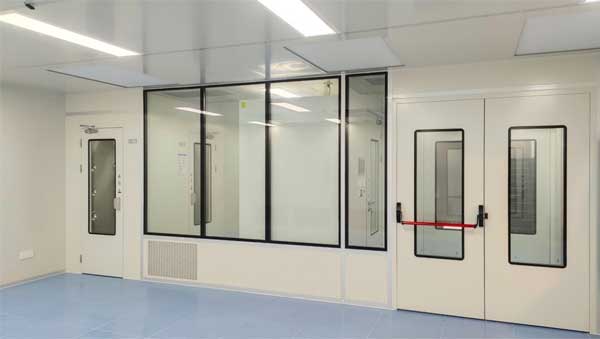1. Project Overview
Project Name: Zhejiang University Science and Innovation Centre Class 1000 Clean Room Project
Project Time: 2024
Project Location: Hangzhou, Zhejiang Province
Client/Partner: College of Aeronautics and Astronautics, Zhejiang University
Project Background: With the continuous development of scientific research and education, the requirements for the experimental environment are getting higher and higher. Especially for the research projects of the College of Aeronautics and Astronautics, the cleanliness directly affects the accuracy of the experimental data and the quality of the research results. Therefore, Zhejiang University College of Aeronautics and Astronautics decided to build a clean room that meets the Class 1,000 standard in order to improve its research conditions and teaching environment.
Project Objective:
Construct a 95 square metres class 1,000 clean room to ensure that the dust particles, microorganisms and other pollutants in the indoor air meet the class 1,000 standard.
Provide a stable and controlled experimental environment to ensure the accuracy of research data and the quality of research results.
Comply with ISO 14644-1 standards to ensure the long-term stable operation of the cleanroom.
2. Project Implementation
2.1 Design stage
Demand analysis: Communicate with the College of Aeronautics and Astronautics of Zhejiang University to understand its scientific research needs and specific requirements in detail.
Preliminary design: according to customer needs and industry standards, develop a preliminary design programme.
Detailed design: further refine the programme, including air purification system, temperature and humidity control system, lighting system and so on.
2.2 Construction Stage
·Construction preparation: material procurement, personnel arrangement and other preparatory work.
·On-site construction: construction in strict accordance with the design programme to ensure that each link meets the requirements.
·Quality control: implement the whole process of quality control to ensure the quality of the project.
2.3 Commissioning and acceptance
·System debugging: carry out comprehensive debugging of the entire cleanroom system to ensure that all indicators meet the standards.
·Performance test: Invite third-party organisations to carry out tests to verify whether the cleanliness level meets expectations.
·Final acceptance: carry out final acceptance with the customer and deliver the product for use.
3. Adopted technology and standards
·Air purification technology: High-efficiency filters (HEPA) are used to ensure that the concentration of airborne particles reaches the thousand-level standard.
·Temperature and humidity control: maintain constant temperature and humidity through precision air conditioning system to avoid affecting the experimental data due to environmental changes.
·Anti-static treatment: The area of sensitive experimental equipment is treated with anti-static treatment to prevent the impact of static electricity on the experiment.
·Compliance with standards: The whole project is carried out with reference to ISO 14644-1 standards to ensure that the cleanliness reaches the international advanced level.
4. Project results
·The cleanliness meets the standard: After third-party testing, the dust particle concentration and microbial count of the clean room have reached the Class 1,000 standard.
·Improvement of research conditions: After the clean room was put into use, the research conditions of the college were significantly improved, and the accuracy of experimental data was significantly improved.
·Client satisfaction: The client was very satisfied with the overall effect of the project and gave it a high evaluation.
5. Project Highlights
High-efficiency filtration system: A multi-stage filtration system is adopted to ensure that airborne particles are effectively removed.
Intelligent control: Intelligent control system is introduced to monitor and adjust the temperature and humidity in real time to ensure the stability of the environment.
Energy saving and environmental protection: adopting energy-saving air-conditioning system and lighting equipment to reduce energy consumption and operating costs.
6. Project experience and lessons learnt
Importance of preliminary planning: Adequate preliminary research and detailed planning are the keys to project success.
Multi-party collaboration: A good communication mechanism and close co-operation help to solve various problems encountered in the project.
Continuous Improvement: Continuously sum up the lessons learnt, optimise the workflow and enhance the service level.
7. Conclusion
The successful implementation of this Class 1,000 cleanroom project not only improves the research conditions and teaching quality of Zhejiang University College of Aeronautics and Astronautics, but also accumulates valuable experience for us in the construction of cleanrooms in the institutional industry. We look forward to more cooperation opportunities in the future to jointly promote the development of scientific research and education.
Post time: Nov-21-2024

